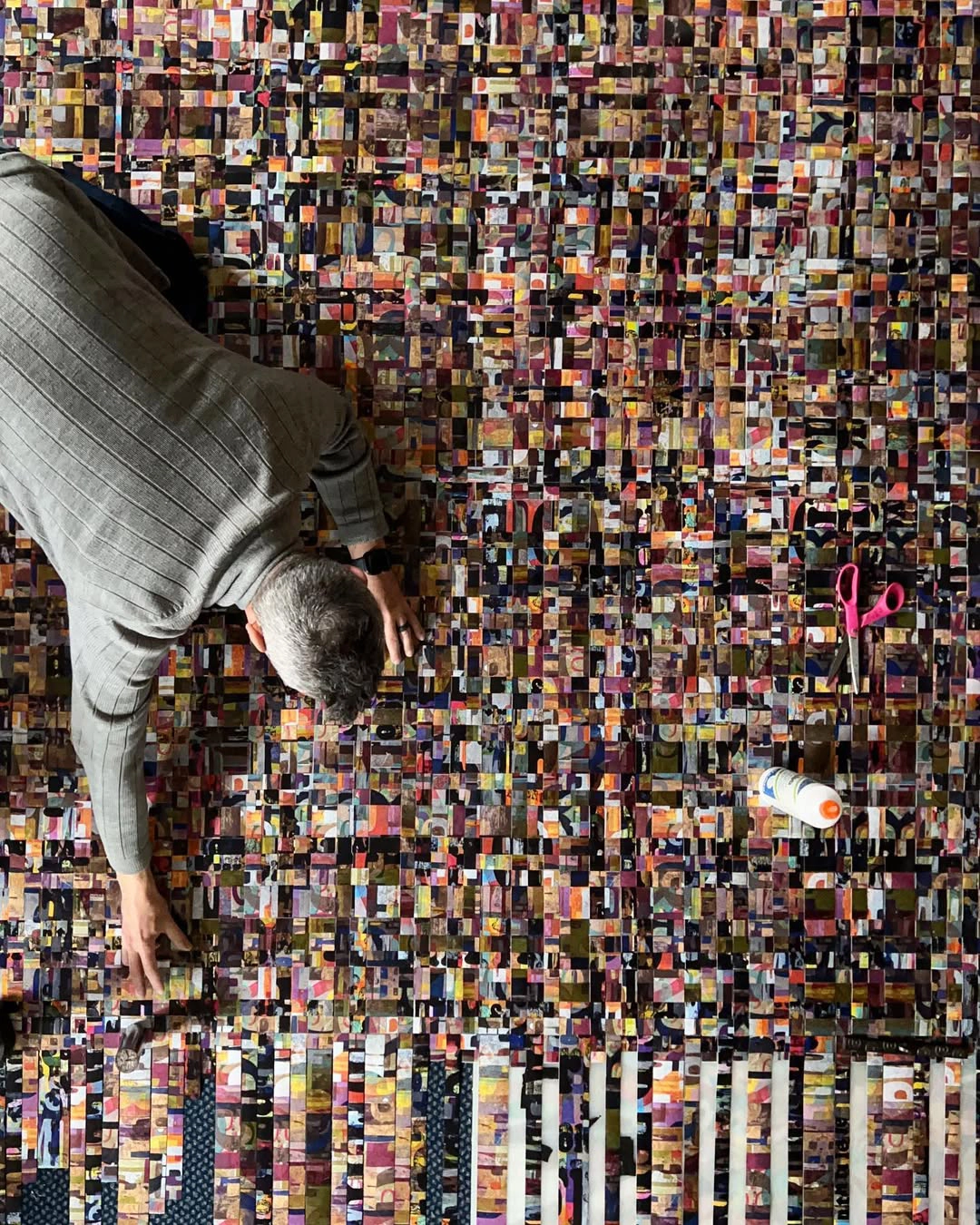
Strip by Strip, 2022. Photo from the artist’s Instagram.
https://www.instagram.com/jonpaulsmithart/?hl=es
The universe is a concert of patterns. Galaxies, solar systems, and planets share elements in common and others that set them apart. The same holds true for nations, cities, and communities. Cincinnati possesses a remarkable artistic community. As I gradually come to know its members, patterns begin to reveal themselves—those that identify them as part of a universal order, and those that distinguish them from others operating in different ecosystems, whether within the metropolitan circuits of Europe or in what is often called the Third World.
Jonpaul Smith is an artist whose work proposes an open, polysemic narrative. He has no interest in imposing a discourse. Instead, he creates an environment where the viewer’s gaze can find its own reflection among forms and colors, drawing upon personal history to establish an intimate dialogue with what is seen. He rejects categorical assertions and embraces the assertive choice of nuance. Nothing is black or white, neither in art nor in life.

From The Space Between, 2023. Solo Show at the University of Evansville Department of Art & Melvin Peterson Gallery at University of Evansville.
One could approach his work through the formal study of color, as an unprejudiced foray into abstraction, or even as an exploration of popular semantic structures through three-dimensional labor. Its connection to craft is undeniable. Quilts, weavings, patterns that recall the domestic sphere and cultural tradition. At times, his work converses with Pop Art, with the chromatic anxiety of consumer culture, and with the shrillness of packaging.
For Smith, technical process carries enormous weight. He carries in his blood an ethic of manual labor inherited from his family in northern Indiana. His grandfather could weld or forge any piece from scrap metal. His mother sewed, quilted, rebuilt an entire porch if necessary. The lesson could not have been clearer: before buying, make it yourself; before discarding, repair it. Perhaps for this reason his work abounds in the ephemeral—scraps of paper, fragments of diverse origin, the most heterogeneous raw material. That farmer’s mentality—saving and transforming into something new—became a driving force in his creative process.

Black Eye - 7ft diameter, hand cut and woven serigraph prints and silver metallic black and white photos.
Smith is drawn to labors that demand time and repetition. This, too, is another perspective on his practice. A mode of working he absorbed in his years of printmaking: working a plate with patience and precision until the image revealed itself. It recalls the repetitive meditations of Asian monks, tasks akin to agricultural weeding—arduous, meticulous, inducing a contemplative state. The same occurs with the paper weaving he adopted in graduate school, though his first experiments go back to childhood, when, in kindergarten, he wove checkered flags for the legendary Indianapolis 500.
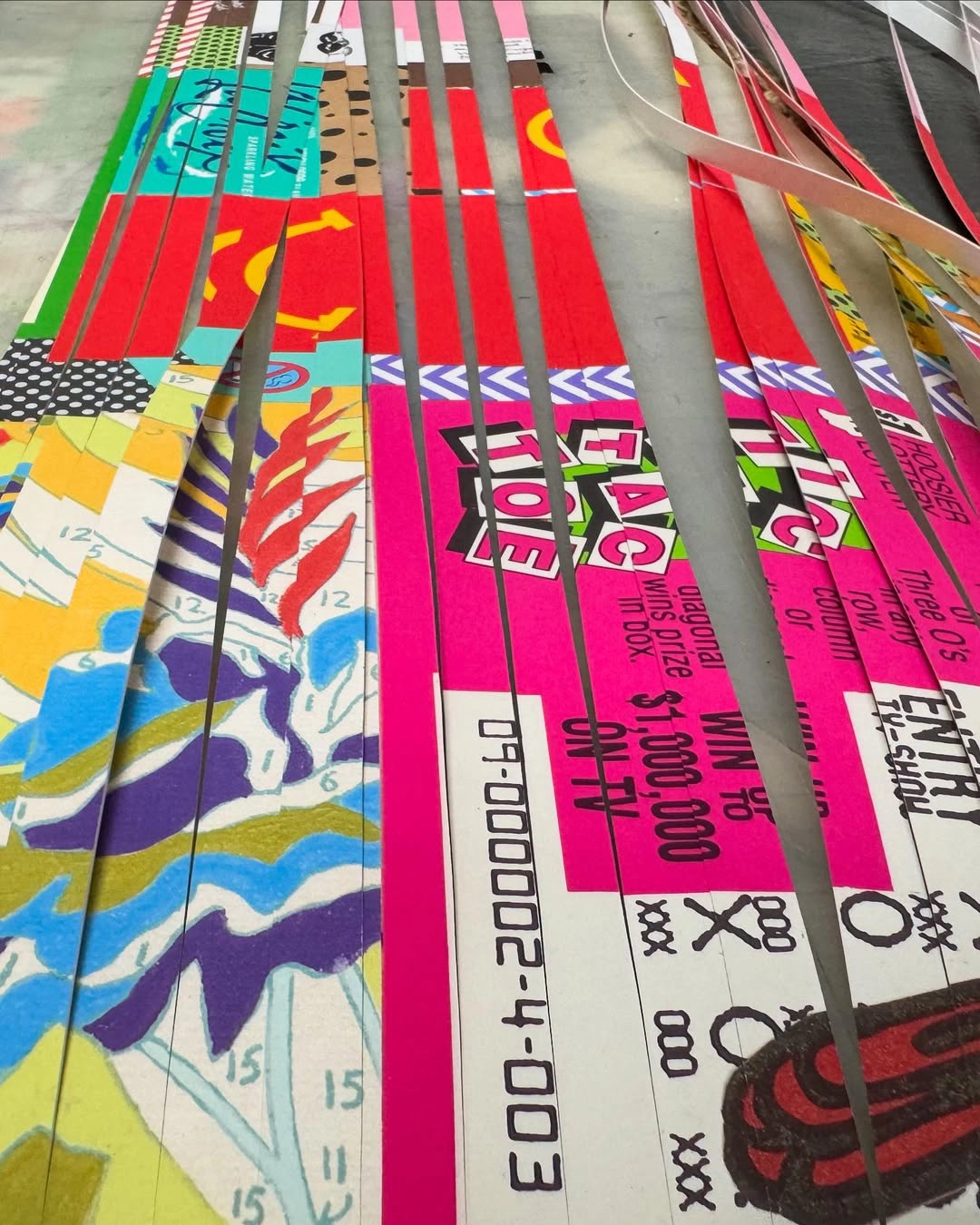
Photo taken in his studio. No. 105 at Essex Studios, Cincinnati, Ohio.
Over time he consolidated the technique. He began by turning his prints into quilt patterns, later incorporating found materials, until today he moves freely between both extremes. His large woven compositions, saturated with color and rhythm, are the synthesis of a patient and obsessive practice.
Delving into his relationship with color, it becomes clear that Smith gravitates toward violent, excessive tones—colors that strike the retina and remain indelible in memory. Yet he often builds each piece from a pared-down palette of primaries, which vibrate and seduce with remarkable intensity. A reflection of his personality? Perhaps. A will to let visual energy flow? Without question.
Some details cannot be overlooked. Creation as catharsis. Processes that quiet the mind and entrust the hands with control. Rhythm born of repetition as an essential part of experience.
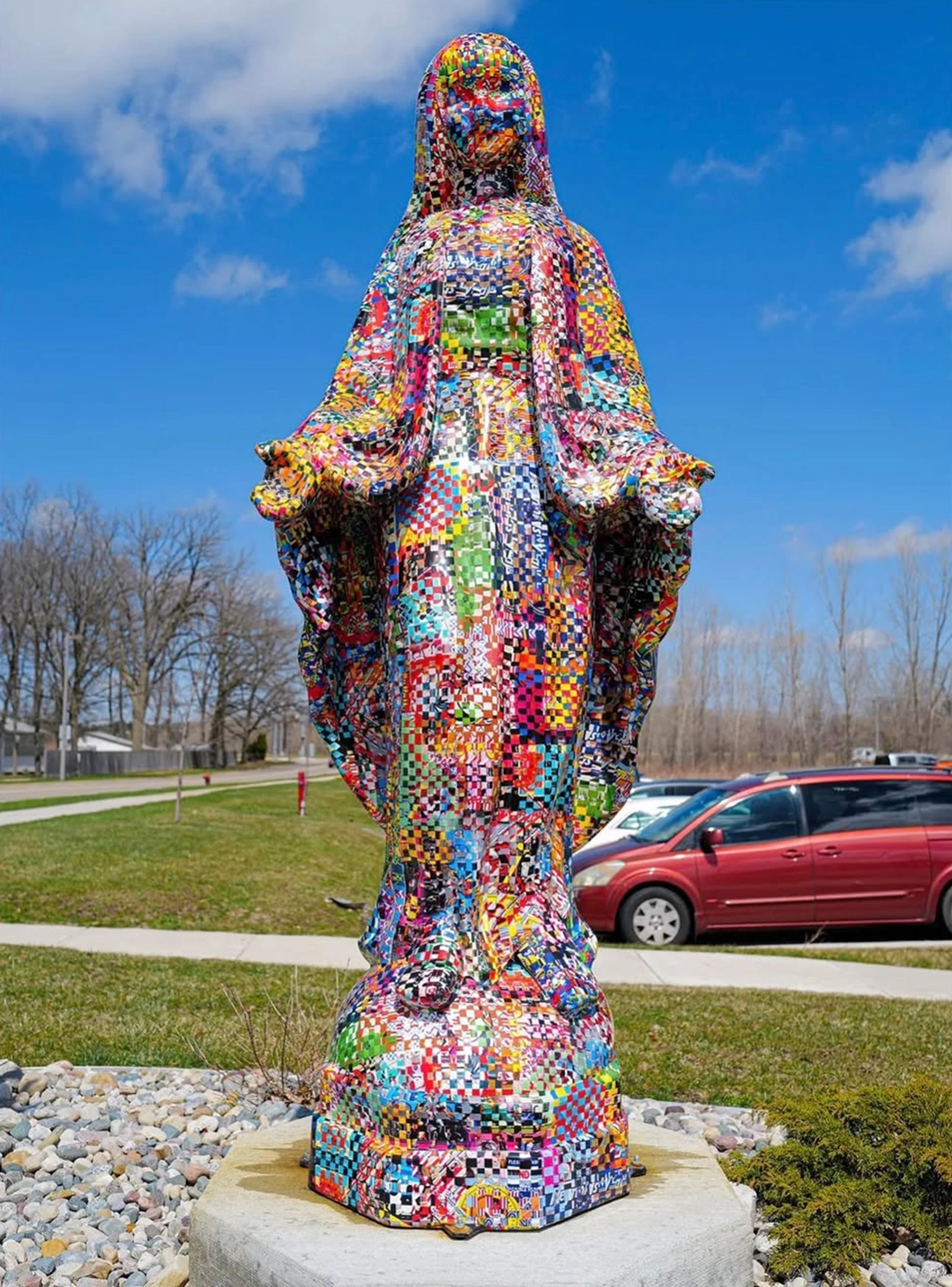
Technicolor Mary, 8 ft, hand sculpted and modeled fiberglass sculpture with a 3M vinyl wrap exterior
His Catholic background is also present. He grew up in a deeply religious environment, with parochial school and a practicing family. In youth, he experienced it as restrictive. Today he acknowledges in Catholicism a visual richness that nourishes his work. Reliquaries, Marian iconography, crucifixes. Objects laden with centuries of meaning, instantly recognizable even outside the faith. That iconography, reinterpreted, appears subtly within his pieces. Tensions between his family roots—Methodist grandparents austere on one side, Catholic grandparents festive on the other—shaped his identity. So did his youth working in his father’s liquor stores, where he arranged cases of beer into boats or Christmas trees: small installations that anticipated his way of perceiving art in the everyday. Smith understands that the boundary between experience and art is porous, and that the true value lies in crossing it.
In a single paragraph
He is an artist whose practice rests on an ethic of absolute rigor, intolerant of negligence. He does not seek the spotlight at openings nor excessive personal exposure. He prefers the silence of the studio, though he recognizes the present need to participate in networks and local scenes. He combines the authenticity of manual tradition, the chromatic intensity of popular culture, and the introspection of a maker who turns every fragment into an open narrative. His work is—and here the universal pattern becomes singularity—a reflection of himself, his origins, familial tensions, Catholic education, and an obstinate faith in creation as a way of life.
Smith According to Jonpaul
I consider my process to be one of gathering and disseminating information, rooted in the paper scraps and ephemera of our consumer culture. As I create and gather this material/information I begin combining this seemingly unrelated material into an almost assemblage like form. Once one of these assemblages is created I begin another in response to the first. I try to create a conversation between the two assemblages; whether this is through imagery or solely based in aesthetic color choices. After the two assemblages exist, I hand cut them with a razor blade and straightedge into strips. These strips are kept organized and then the two separate images/collages are woven together creating the final work. A complex, tapestry-like construct, made up of hundreds of interwoven strips of discarded consumer packaging, original traditional and non-traditional prints, gouache paintings, smoke transfers and other paper ephemera. Which similarly make use of (and, in a sense, refine) pop culture imagery.




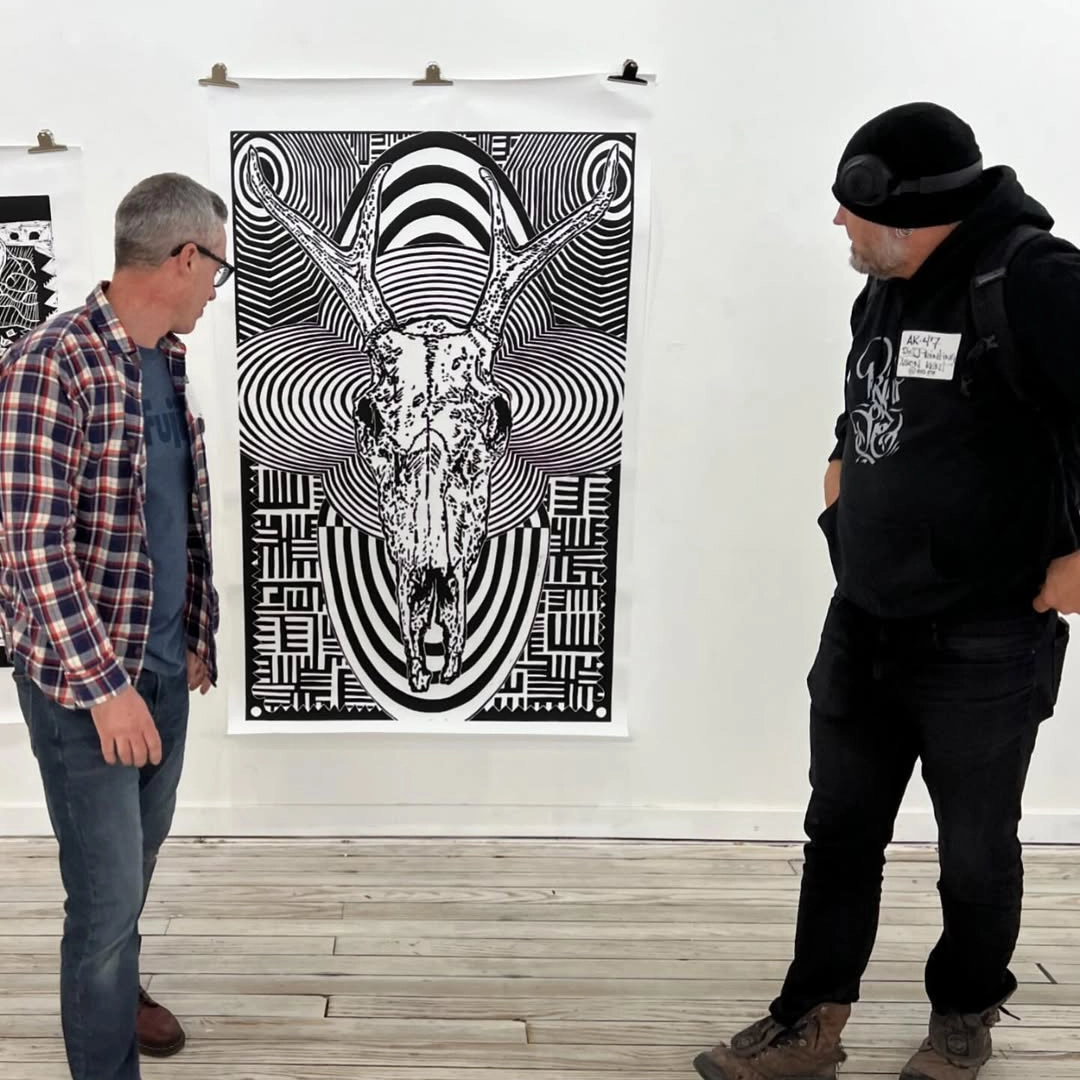
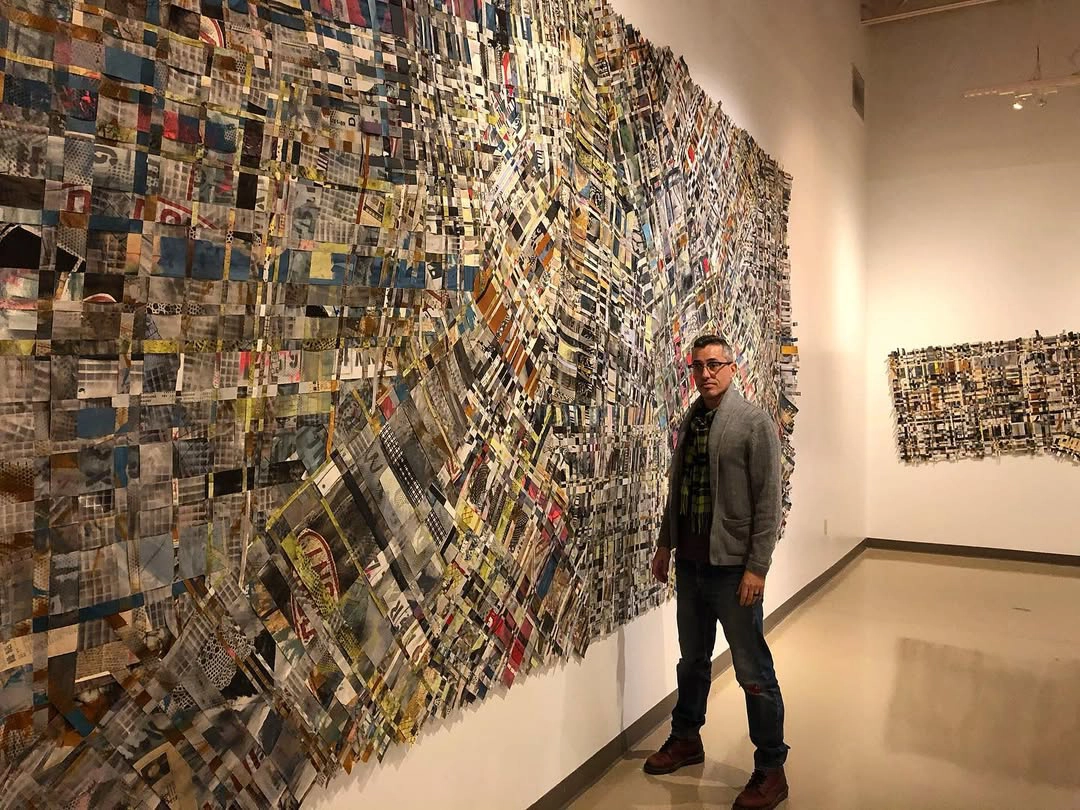
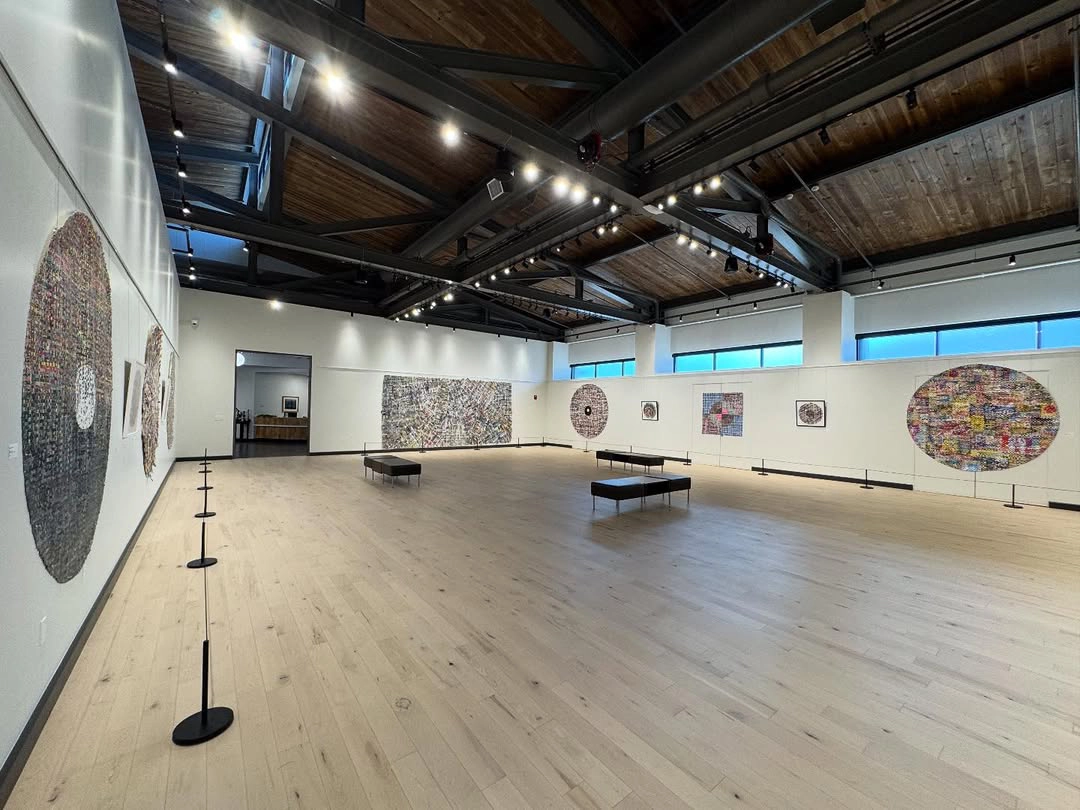

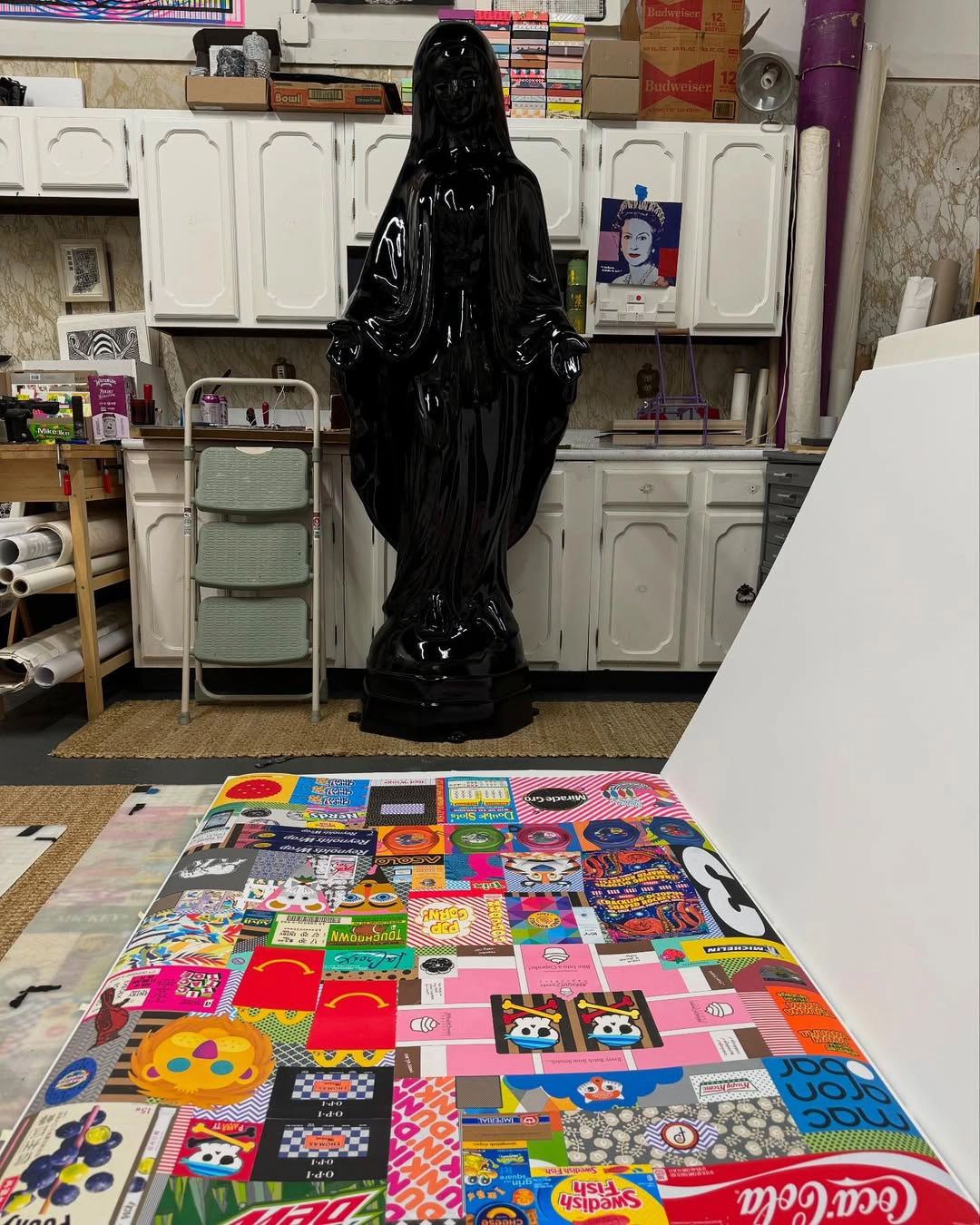
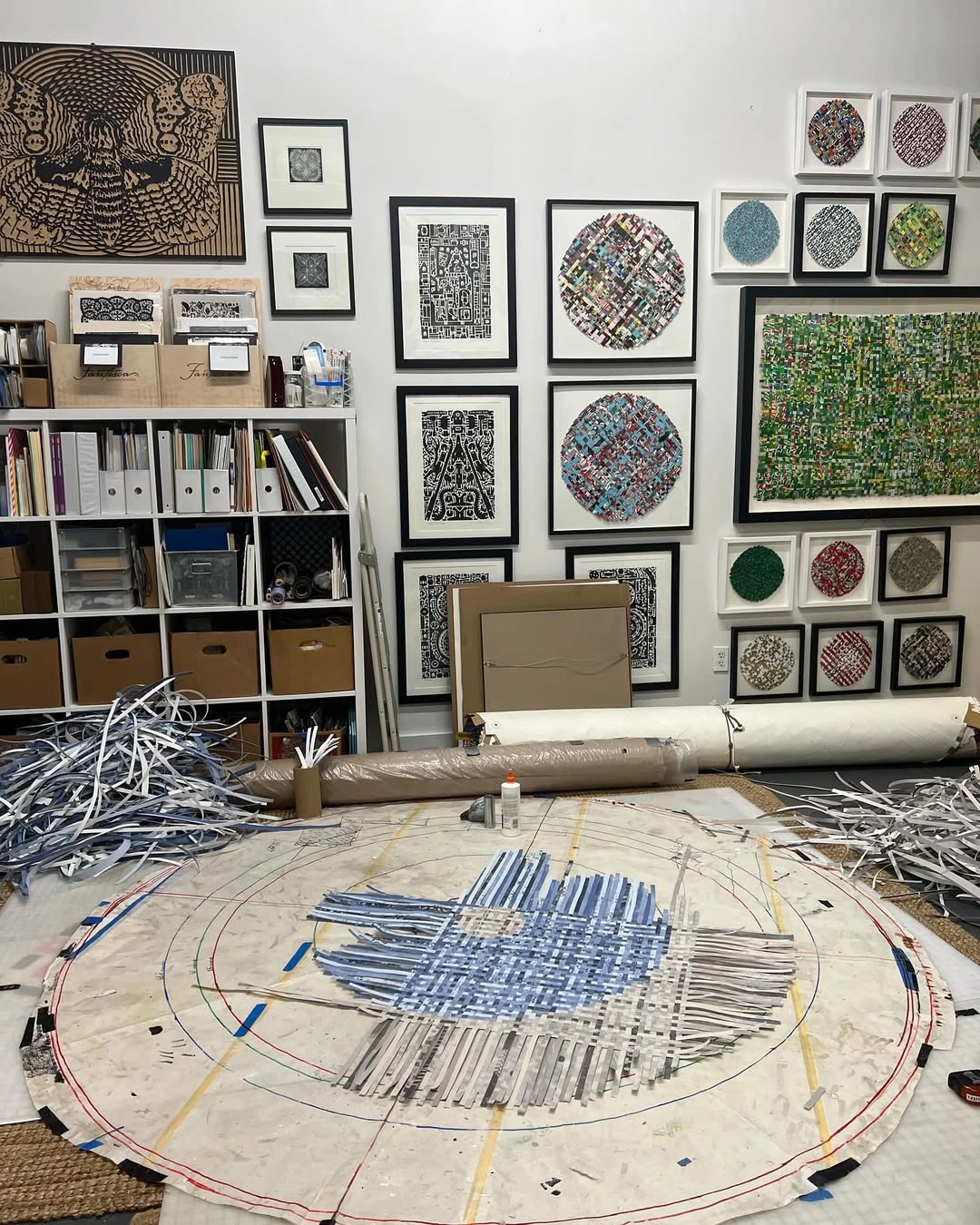





Comments powered by Talkyard.